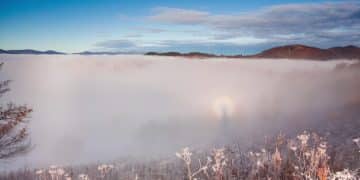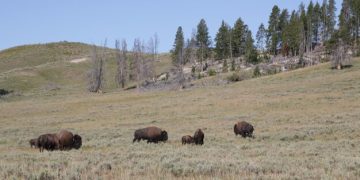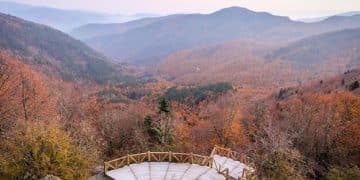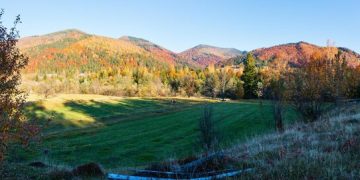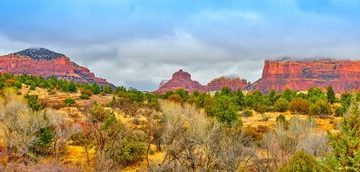Escape the Crowds: Secret Hiking Trails in National Parks
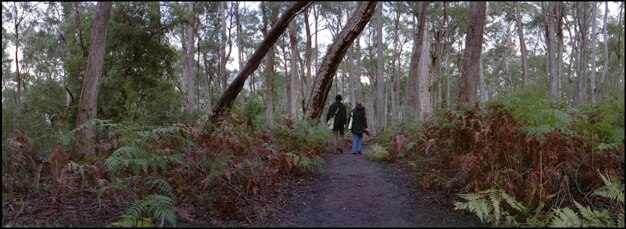
Avoiding the crowds in popular US National Parks can be achieved by discovering hidden hiking trails, offering solitude and unique perspectives away from the bustling main routes.
Avoiding the crowds: discovering hidden hiking trails in popular national parks offers an escape into nature’s tranquility. Instead of battling hordes on well-trodden paths, uncover serene trails where you can truly connect with the wilderness.
Unveiling the Allure of Hidden Hiking Trails
National Parks are cherished for their stunning landscapes and abundant wildlife, but their popularity can sometimes detract from the experience. The desire to connect with nature in solitude is a common one among hikers, leading many to seek out less- traveled paths.
By venturing off the beaten path, hikers can discover unique perspectives, encounter untouched ecosystems, and immerse themselves in the tranquility of nature, far from the noise and congestion of popular trails.

Planning Your Escape: Research and Preparation
Successfully avoiding the crowds and discovering these hidden gems requires careful planning and research. Simply heading out with a map and compass might not be enough. Thorough preparation is key to a safe and rewarding experience.
Utilizing Technology and Resources
In today’s digital age, several resources can aid in your quest for secluded trails. From online mapping tools to detailed park guides, leverage these assets to gather valuable information.
- Online Hiking Platforms: Websites and apps like AllTrails and Gaia GPS often feature user-submitted routes and reviews, including trails that are less frequented.
- Park Websites and Publications: Official park websites provide maps, trail descriptions, and sometimes even information on backcountry permits.
- Local Hiking Groups and Clubs: Connecting with local hiking communities can provide insider knowledge and recommendations for lesser-known trails.
Always cross-reference information from multiple sources to ensure accuracy and reliability. Be aware of potential closures, permit requirements, and seasonal conditions.
Essential Gear and Safety Considerations
Venturing into less-traveled areas requires a higher level of preparedness compared to hiking popular trails. Ensure you have the necessary gear and knowledge to handle potential challenges.
Navigation Tools
While technology is helpful, it’s crucial to have traditional navigation tools as a backup. Batteries can die, and cell service is often unreliable in remote areas.
- Physical Map and Compass: Master the basics of map reading and compass navigation.
- GPS Device: A dedicated GPS device can provide accurate location data and track your progress.
- Offline Maps: Download offline maps on your smartphone or GPS device in case of limited connectivity.
Regularly practice your navigation skills to build confidence and familiarity. In unfamiliar territory, navigation is more critical.
Leave No Trace Principles
Avoiding the crowds means respecting the environment and minimizing your impact. Adhering to Leave No Trace principles is crucial for preserving the natural beauty of these hidden trails.
Leave No Trace promotes responsible outdoor ethics, aiming to protect natural areas from human disturbance and ensure they are enjoyable for everyone.
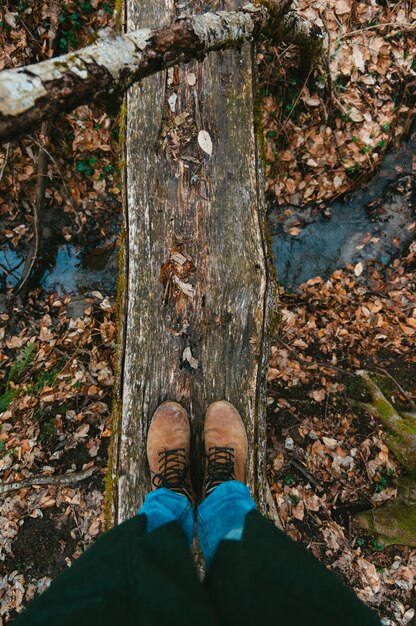
Spotlight on Hidden Hiking Trails in Popular National Parks
Several National Parks offer opportunities to avoid the crowds and embark on unique hiking experiences. These parks are a treasure trove of less-traveled trails, providing ample opportunities for solitude and exploration.
Acadia National Park, Maine
Beyond the famous Cadillac Mountain and Park Loop Road, Acadia boasts numerous hidden trails along its coastline and forested interior.
- Ocean Path to Otter Point: Extends beyond the popular Sand Beach section.
- Exploring the Carriage Roads: Offers a tranquil experience amidst nature.
- Day Mountain Trail: Provides a gentle hike with an overview.
Grand Canyon National Park, Arizona
While the South Rim attracts the majority of visitors, the North Rim and inner canyon offer more secluded hikes.
- North Kaibab Trail: A less crowded trail descending into the canyon.
- Widforss Trail: Provides views while following the canyon’s edge.
- Cape Royal Trail: Offers panoramic views of the canyon.
Yosemite National Park, California
Beyond the iconic Yosemite Valley, explore the park’s vast wilderness on less-traveled trails.
- Chilnualna Falls Trail: Less crowded falls with scenic views.
- May Lake Trail to Mount Hoffmann: A beautiful trail to a lake.
- Tuolumne Meadows Trails: Explore the high country with fewer crowds.
Exploring these trails is about more than just seeing the park; it’s also about the unique experiences avoiding the crowds and having the trails to yourself.
Respecting Wildlife and Natural Habitats
When venturing into secluded areas, it’s essential to respect wildlife and their habitats. Maintaining a safe distance and avoiding disturbance is crucial for their well-being.
Be aware of potential wildlife encounters, such as bears, mountain lions, or snakes. Carry bear spray in bear country, and know how to react in case of an encounter. Always store food properly to avoid attracting animals.
Embracing the Unexpected: Flexibility and Adaptability
Avoiding the crowds and exploring hidden trails often involves embracing the unexpected. Be prepared for unexpected challenges and adapt your plans as needed.
Weather conditions can change rapidly, especially in mountainous areas. Check the forecast before your hike, and be prepared for rain, wind, or temperature fluctuations. Have alternative routes in mind in case your original plan is not feasible.
| Key Highlight | Brief Description |
|---|---|
| 🗺️ Research | Find lesser-known trails using online platforms, park resources and hiking groups. |
| 🎒 Gear | Carry essential items like maps, compass, GPS, and offline navigation to navigate. |
| 🌿 Environment | Minimize your impact (Leave No Trace) and respecting wildlife. |
| 🏞️ Adaptability | Be prepared for changes in weather conditions and embrace the unexpected. |
FAQ Section
▼
Look for trails highlighted on online hiking platforms or visit parks during off-peak seasons/weekdays. Also research local parks and trails near National parks.
▼
Along with navigation tools and essential supplies, consider packing extra water, a first-aid kit, a portable charger, and a signaling device.
▼
Maintain a safe distance from animals. Avoid disturbing their habitats by staying on designated trails. Store food properly to prevent attracting wildlife.
▼
Less-traveled routes can present unexpected difficulties due to weather, path conditions, or navigational problems. Being adaptable ensures a safer, more enjoyable experience.
▼
Adhere to Leave No Trace principles, which include packing out all trash, minimize campfire impacts, respecting wildlife, and leaving natural objects untouched.
Conclusion
Avoiding the crowds: discovering hidden hiking trails in popular national parks offers a fulfilling experience where you can fully embrace the tranquility of nature within US National Parks. Careful planning, essential gear, environmental awareness, and adaptability ensures a memorable and eco-friendly experience.

